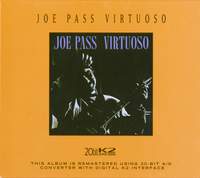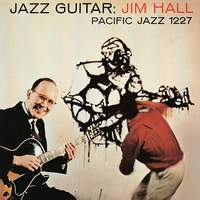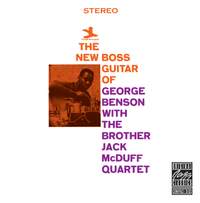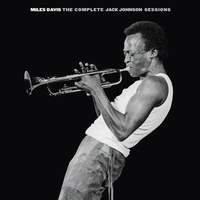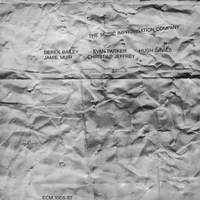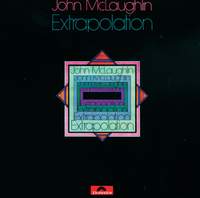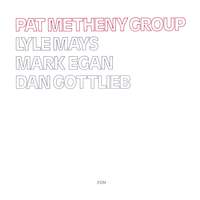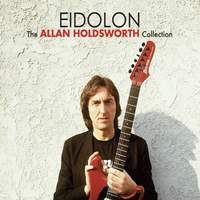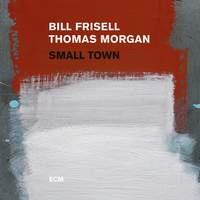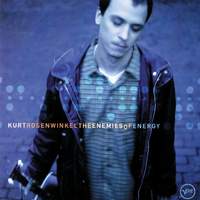Jazz Genre Guides,
Jazz Guitar

 While perhaps the most ubiquitous lead jazz instruments would be the piano, trumpet or saxophone, the truth is that the six-string guitar has been a part of the genre from its very earliest beginnings. The guitar’s developments, including the need for amplification, were often born out of the needs of players playing in bebop and swing groups, and indeed many of the earliest pioneers of the electric guitar were jazz players. The acoustic guitar was already a popular addition to the big bands of the early twentieth century, with the development of the archtop guitar, a precursor to the electric guitar that somewhat resembles a hollow-body electric. With a more muted sound and F-holes resembling an upright bass, the guitar slowly replaced the banjo, which was at the time the most prevalent fretted stringed instrument in jazz groups, players favouring the greater harmonic possibilities. Following the era of big band and swing, the guitar entered into the worlds of bebop when bandleaders started giving talented soloists like Wes Montgomery and Joe Pass solo space, along with the saxophone and trumpet, and many of them moving on to lead their own bands. The guitar shares the piano’s versatility in that it is equally at home providing chordal accompaniment as a leading instrument in the band, or for solo performances. Due to the volume required to compete with drummers and brass/wind players, the vast majority of guitar jazzers would opt for the sound of the hollow-body electric guitar to give them an equal acoustic and electric presence.
While perhaps the most ubiquitous lead jazz instruments would be the piano, trumpet or saxophone, the truth is that the six-string guitar has been a part of the genre from its very earliest beginnings. The guitar’s developments, including the need for amplification, were often born out of the needs of players playing in bebop and swing groups, and indeed many of the earliest pioneers of the electric guitar were jazz players. The acoustic guitar was already a popular addition to the big bands of the early twentieth century, with the development of the archtop guitar, a precursor to the electric guitar that somewhat resembles a hollow-body electric. With a more muted sound and F-holes resembling an upright bass, the guitar slowly replaced the banjo, which was at the time the most prevalent fretted stringed instrument in jazz groups, players favouring the greater harmonic possibilities. Following the era of big band and swing, the guitar entered into the worlds of bebop when bandleaders started giving talented soloists like Wes Montgomery and Joe Pass solo space, along with the saxophone and trumpet, and many of them moving on to lead their own bands. The guitar shares the piano’s versatility in that it is equally at home providing chordal accompaniment as a leading instrument in the band, or for solo performances. Due to the volume required to compete with drummers and brass/wind players, the vast majority of guitar jazzers would opt for the sound of the hollow-body electric guitar to give them an equal acoustic and electric presence.

Following on from this, the guitar was of course a key component in the sound of jazz fusion; the rather nebulous term describing the meeting of jazz and rock, which we touched upon in our last Jazz Genre Guide. The sound of the electric guitar was pushed more and more by players like John McLaughlin and in particular Pat Metheny and Allan Holdsworth, two players who made use of pioneering - at least at the time - guitar synthesisers. With fusion also favouring the loud, amplified sounds of contemporary rock music, the electric guitar found itself right at home in Miles Davis’s band, Wayne Shorter and Joe Zawinul’s Weather Report, or John McLaughlin’s own Mahavishnu Orchestra. More contemporary guitarists have since shied away from the more outlandish ‘typical 80’s’ sounds, favouring the sound of the clean amplified guitar, with judicious amounts of grit to help it cut through the mix. While the modern age of music seeing many overlaps between genres, jazz included, many contemporary jazz guitarists seem keen to celebrate the raw sound of the electric guitar in jazz; players like Julian Lage and Kurt Rosenwinkel are a little more traditional in their textures of choice.
As with any guide such as this, this list is by no means exhaustive. No doubt there may be a player we’ve missed, but in the interest of not waffling too much, we’ve narrowed it down to a few key players from each era (at the risk of simplifying things a little), but there’s plenty to dig into. Where possible, I’ve provided links to either a landmark recording of theirs, or a ‘best of’ collection.
Early Pioneers
A key player in the era of swing bands, Charlie Christian first laid his hands on a guitar after inheriting his father’s collection of instruments at age twelve. His big break came when he landed a gig in the Benny Goodman Orchestra, gaining attention for his lead technique - which Christian himself was aiming to imitate a tenor saxophone - and improvisational skills. Though he predated it by quite some time, and unfortunately passed away at the age of twenty-five as a result of declining health from tuberculosis, Christian’s style would be essential in the developing sound of bebop guitar.
Available Formats: MP3, FLAC
Though getting his start on a pawn shop four-string tenor guitar, Wes Montgomery did not properly begin studying the six-string guitar until he was into his mid-20’s, and asserts he had to start from scratch upon picking it up. Picking up touring gigs while his wife and child stayed at home, Montgomery’s dedication to his craft eventually saw him landing gigs with Charles Mingus and Fats Navarro. Montgomery’s trademark technique was to play using his thumb to soften the sound of the strings, while accentuating his lead lines by playing double-stopped octaves instead of single notes. All of his Montgomery-isms - codified into his playing style early on - are best exemplified on one of his most popular recordings, The Incredible Jazz Guitar of Wes Montgomery.
Available Formats: CD, MP3, FLAC
Joe Pass is often cited by guitarists as inspiration for his distinctive technique, and was lauded as a virtuoso from his earliest shows and records. Pass would spend much of the 1950’s in and out of prison for drug convictions, but following his rehabilitation and re-emergence into playing music in the 60’s he picked up several recording gigs with artists including Oscar Peterson and Ella Fitzgerald, the latter of whom Pass played with on six of her albums, though his self-penned album debut Virtuoso is entirely solo, featuring a collection of his reinterpretations of contemporary tunes.
Available Formats: MP3, FLAC
The child of a musical family, Jim Hall’s early life encouraged his musical curiosities, inspired to play by Charlie Christian. Hall’s solo style was also highly informed by tenor sax players like Lester Young and Coleman Hawkins. His career in the early 60’s saw him touring with Jazz at the Philharmonic, while he would lead a trio with Tommy Flanagan and Ron Carter, Flanagan of course known for his work with John Coltrane on Giant Steps as well as with Wes Montgomery. Particular stand-out albums include his early breakout Jazz Guitar (1957), as well as latter-day records like Concierto (1975), while he can also be heard on Sonny Rollins’ The Bridge, and his collaboration with Bill Evans Undercurrent is also definitely worth a listen.
Available Formats: MP3, FLAC
Grant Green was one of the more prolific guitarists on Blue Note’s roster, his style showcasing his love of rhythm & blues, as well as (like many guitarists in this guide) his appreciation for saxophonists. Green’s distinctively punchy tone was supposedly due to a strong mid-frequency push on his amplifiers - according to George Benson, Green would roll off the highest and lowest frequencies to ensure his guitar could cut through the mix of a band. Possibly his most well-known recording, Idle Moments, is an essential hard bop recording and one of the most revered releases in the Blue Note catalogue.
Available Formats: CD, MP3, FLAC, Hi-Res FLAC, Hi-Res+ FLAC
Beginning at a young age playing jazz guitar, George Benson is perhaps more known for his contributions to the soul jazz sound as a singer as well as guitarist - no doubt the first thing that comes to many people’s mind is ‘Give Me the Night’. Benson’s output during the 60’s was more in-line with the jazz crowd, contributing to Miles Davis’s Miles in the Sky in 1968, as well as recording with a handful of other jazz musicians, while also recording a Beatles tribute The Other Side of Abbey Road. By the turn of the 1970’s his crossover appeal had begun to blossom into an entirely new following, and his latter output would see Benson adopting more of a singer-songwriter persona. His early work is less funky and poppy, but you can certainly hear the echoes of his emerging soul-crossover technique.
Available Formats: MP3, FLAC
The Free School
Pharaoh Sanders, Herbie Mann and Peter Brötzmann collaborator Sonny Sharrock’s true aspiration was to play the tenor saxophone after hearing John Coltrane, but he picked up the guitar instead due to his asthma preventing him from playing sax. As a result, his style is notably horn-like in his improvisations, though he definitely embraced techniques exclusive to the electric guitar, most notably his use of distortion and feedback to make even more of a racket than some of the wildest sax players. Sharrock was also featured (although uncredited) in the sessions for Davis’s A Tribute to Jack Johnson, playing some noisy improvisation that would make Sonic Youth jealous.
Available Formats: MP3, FLAC
While Derek Bailey’s adult musician career began with session gigs with British entertainers and comedians, his first forays into jazz quickly got him interested in free improvisation. Much of Bailey’s most well-known work is devoid of many things that would attract most listeners to music in the first place; it is atonal, rhythm is seemingly absent, and Bailey often eschewed traditional techniques in favour of creating unconventional sounds via amplification and feedback, as well as playing with a ‘prepared guitar’, similar to a prepared piano. With groups like Spontaneous Music Ensemble and The Music Improvisation Company, Bailey produced some of the more challenging free music using amplified electric guitar, although he would himself claim to be one of the more ‘conventional’ free improvisers.
Available Formats: MP3, FLAC
Fusion and Beyond
Lauded by Metheny as one of the greatest guitar players alive, Doncaster-born John McLaughlin was initially inspired by the gypsy jazz stylings of Django Reinhardt, though he began his adult career playing in jazz-blues bands before releasing his solo album Extrapolation and joining Tony Williams’ band Lifetime. Extrapolation would not be issued in the US until McLaughlin found success leading his band Mahavishnu Orchestra, playing a complex style born of jazz fusion, prog rock and Indian classical music; McLaughlin’s approach is typically characterised by fast, technical and aggressive playing. Some of his most known contributions can also be heard on Miles Davis’s fusion albums like Bitches Brew and On the Corner, as well as the quietly gentle In a Silent Way.
Available Formats: MP3, FLAC
Widely celebrated player Pat Metheny is hardly an obscure pick; Wes Montgomery was among his most prominent influences, though he would never dare attempt to impersonate him. One of Metheny’s earliest recordings that got him attention was on the (unofficially titled) live album ‘Jaco’, alongside bassist Jaco Pastorius. After releasing a handful of self-penned records on ECM, much of Metheny’s output was under the Pat Metheny Group from the latter half of the 1970’s through to the early 2000’s. Besides embracing guitar synthesisers, one of Metheny’s more unique instruments is a 42-stringed harp guitar that was custom-built for him by the luthier Linda Manzer, which can be heard on his album Imaginary Day (1997).
Available Formats: CD, MP3, FLAC, Hi-Res FLAC
Described by fellow guitarist Robben Ford as “the Coltrane of the guitar”, the late Allan Holdsworth is one of the UK’s greatest contributions to the jazz canon, and one of the most enigmatic characters on this list. Holdsworth’s use of outlandish harmonies is what sets him apart from other players on this list, and indeed most other guitarists in general; there’s very few people that sound like Holdsworth. He also embraces possibly the ‘most 80’s’ musical invention I’ve ever seen; the SynthAxe, essentially a synthesiser able to be controlled by a guitarist, and his music goes to some strange sonic places too. While in terms of production and tone a lot of Holdsworth’s music sounds very ‘of its time’, if you have your ears tuned to it, it can be some of the most rewarding fusion there is.
Available Formats: 2 CDs, MP3, FLAC, Hi-Res FLAC
Bill Frisell has seemingly touched all corners of the jazz guitar vocabulary. From his early post-bop-esque releases as bandleader on ECM, much of Frisell’s 1980’s output would be with fusion groups. He was a member of Paul Motian’s group in its many incarnations, from the 1980’s right through to Motian’s passing in 2011, appearing on many classic records. Another frequent collaborator would be avant-garde saxophonist John Zorn; Frisell would do some of his most out-there work as a member of Zorn’s band Naked City, his affinity with guitar effects pedals lending his style a slightly experimental and ‘alternative’ edge. Since the early 2000’s, Frisell has since settled into a stylistic corner of his own, combining his many musical interests in jazz, bluegrass, folk and surf music. In some ways, he’s as much of a presence in contemporary jazz guitar as he was in his fusion times.
Available Formats: CD, MP3, FLAC, Hi-Res FLAC
Contemporary Players
Kurt Rosenwinkel’s first breakout success was as a member of Paul Motian’s Electric Bebop Band, and later even contributed to jazz-rap group A Tribe Called Quest member Q-Tip’s albums The Renaissance and Kamaal the Abstract. Rosenwinkel cites influences from many players further up this list, including Frisell and Holdsworth, as well as non-guitarists like Keith Jarrett and John Coltrane. Though often thought of as a member of the ‘new school’, Kurt Rosenwinkel’s style takes many cues from bebop players, able to play tasteful straight-ahead sounds, although some of his work happily welcomes more electronic sounds into the mix.
Available Formats: MP3, FLAC
If you look up any “best modern guitarists” list, Julian Lage is almost definitely on there. One of the brightest young stars on the circuit today, Lage is easily one of the most well-regarded modern jazz guitarists out there, a child prodigy from a young age. Lage’s output has varied from band records like Arclight to solo acoustic albums like 2015’s World’s Fair, and even John Zorn’s recent recordings. Citing Jim Hall as one of his main influences, as well as blues players like Muddy Waters and even Stevie Ray Vaughan, he retains both the bluesy grit of those players as well as some Frisellian airiness. Often as upbeat as he is quick-thinking, Lage’s fluid improvisational skills are what attract many players and listeners to his music.
Available Formats: CD, MP3, FLAC, Hi-Res FLAC




